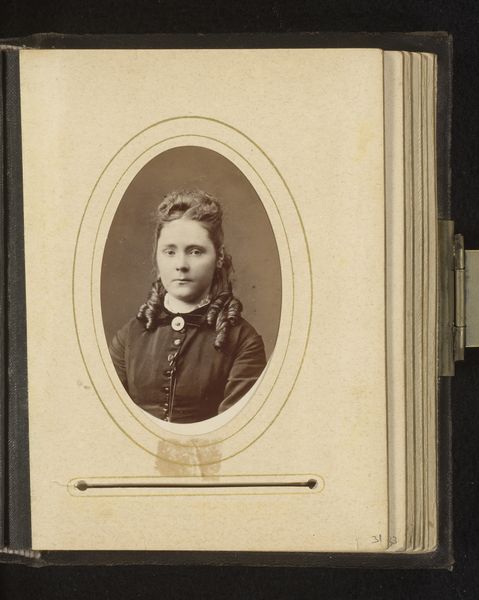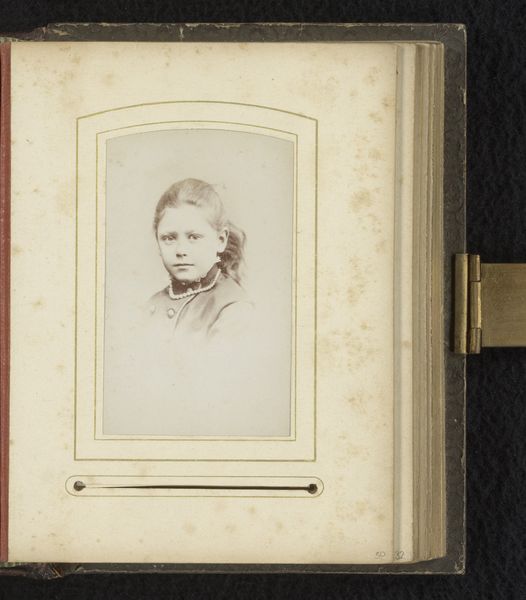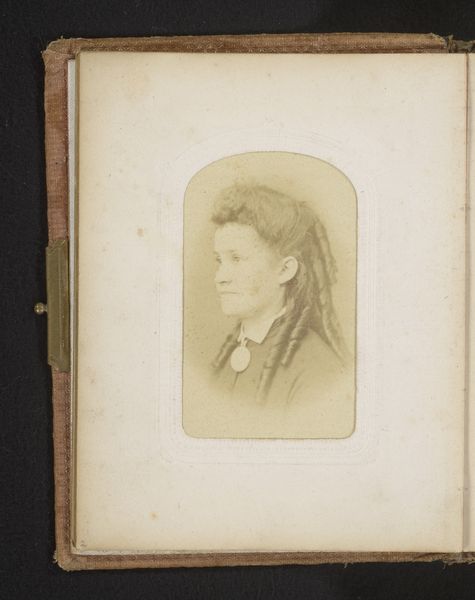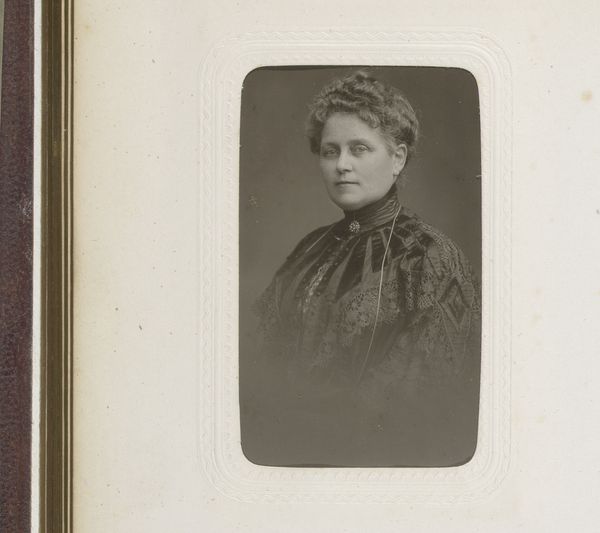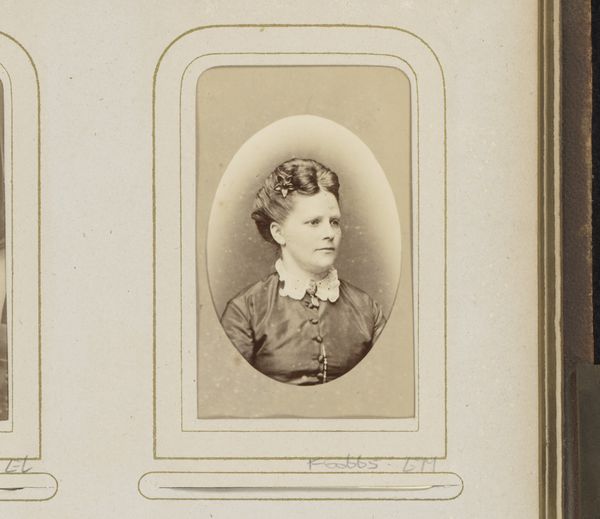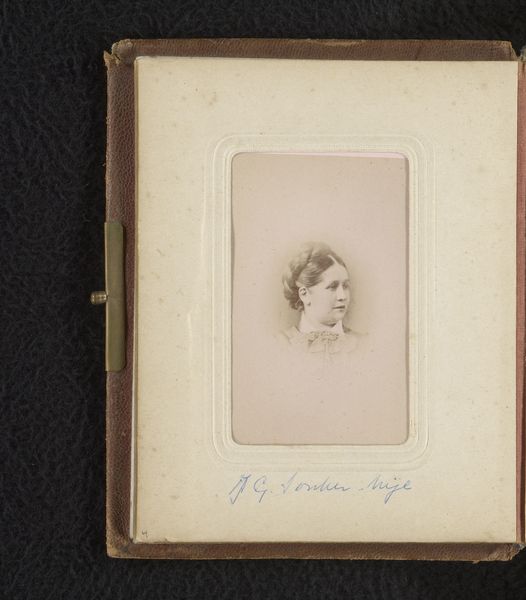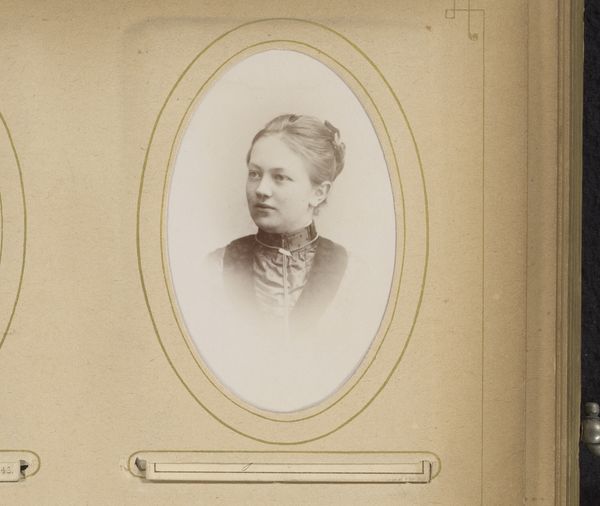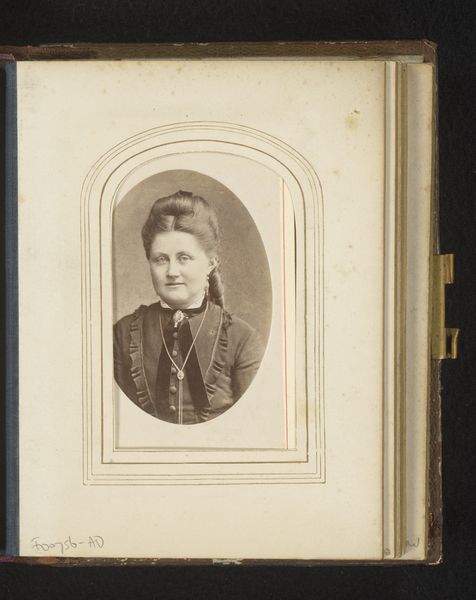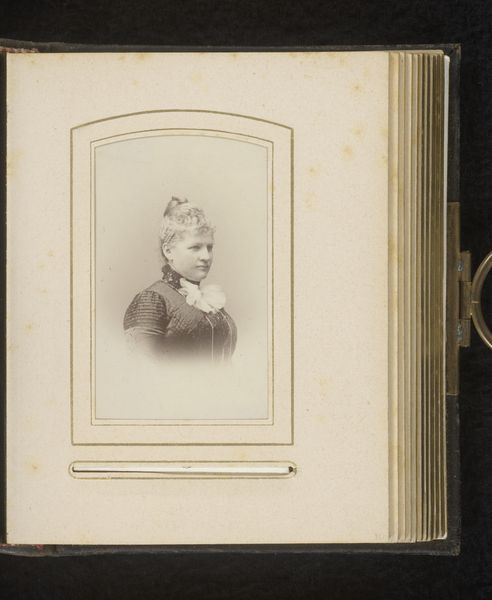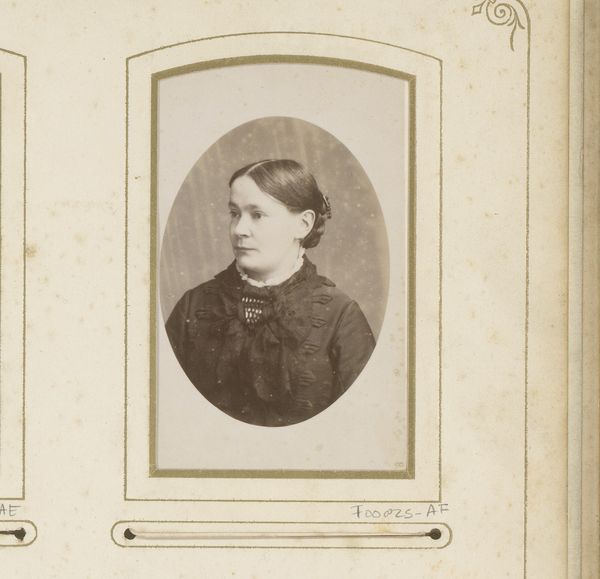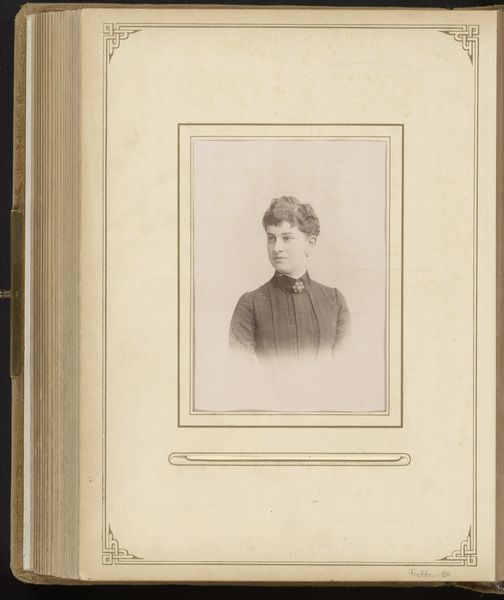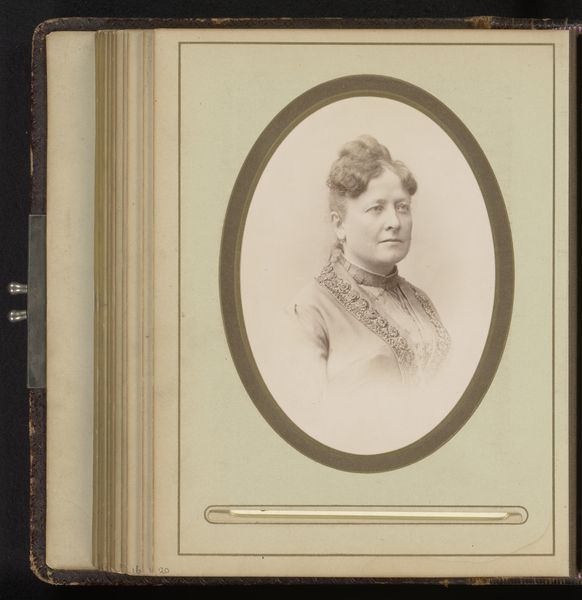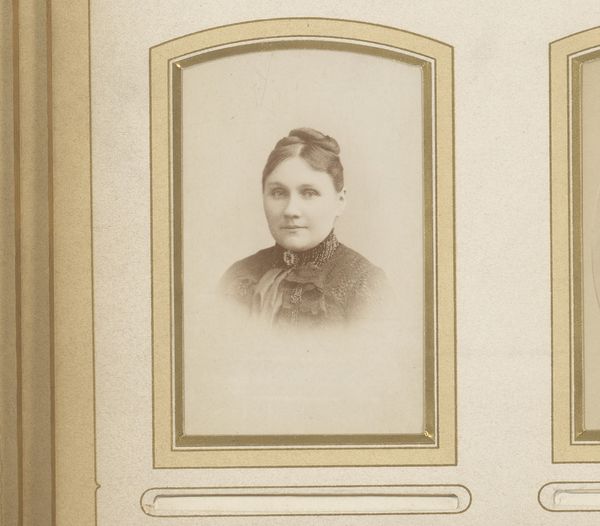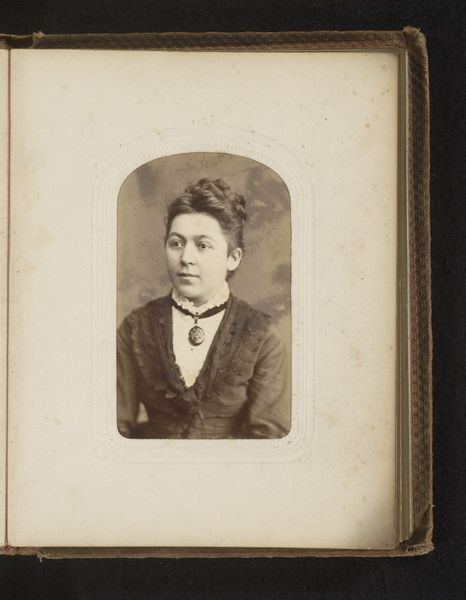
photography
#
portrait
#
charcoal drawing
#
charcoal art
#
photography
#
19th century
#
genre-painting
#
charcoal
Dimensions: height 83 mm, width 51 mm
Copyright: Rijks Museum: Open Domain
Curator: Herrmann Maas' "Portret van een vrouw met halsketting", dating from between 1860 and 1900, offers an intimate glimpse into a woman's life during this transformative period. Editor: It's striking. The softness of the photographic portrait is almost melancholic, but there's a resilience in her gaze. Curator: This melancholic affect aligns with the evolving role of women in the 19th century. While industrialization and urbanization presented new opportunities, the constraints of societal expectations remained rigid. I can’t help but wonder, looking at this photograph, about her potential contributions stifled, dreams deferred. Editor: Indeed, one sees those constraints so clearly presented through portraiture during this period. Beyond this, the choice to capture her is interesting, and considering Maas' artistic and photographic license—why and for what public was this work being constructed? The woman’s adornments, the necklace itself… are they coded markers? Curator: They speak to her social positioning. Photography's burgeoning accessibility allowed the middle classes to engage in a representational politics formerly reserved for the elite. These details reflect not only the sitter's economic status but also the performance of her identity within specific cultural codes. The very act of being photographed held social weight. Editor: And consider the role of the photographer, Maas. What were his relationships with his subjects and what types of negotiation took place with this woman being represented. Photography, with its perceived objectivity, simultaneously veils complex power dynamics and raises difficult questions about representation and access. The subtle control involved in framing a subject—or framing how they would be perceived in a certain sociopolitical lens. Curator: The framed portrait and presentation contribute a layer, almost enforcing a certain consumption by audiences, while subtly framing and impacting its meanings and connotations, then and now. Editor: Reflecting on "Portret van een vrouw met halsketting", its charm lies in both its aesthetic appeal and its evocation of historical and sociological complexities. Curator: I think the work, particularly as viewed now, almost performs an archive in and of itself. There's so much unsaid, making the portrait rife for interpretation.
Comments
No comments
Be the first to comment and join the conversation on the ultimate creative platform.
